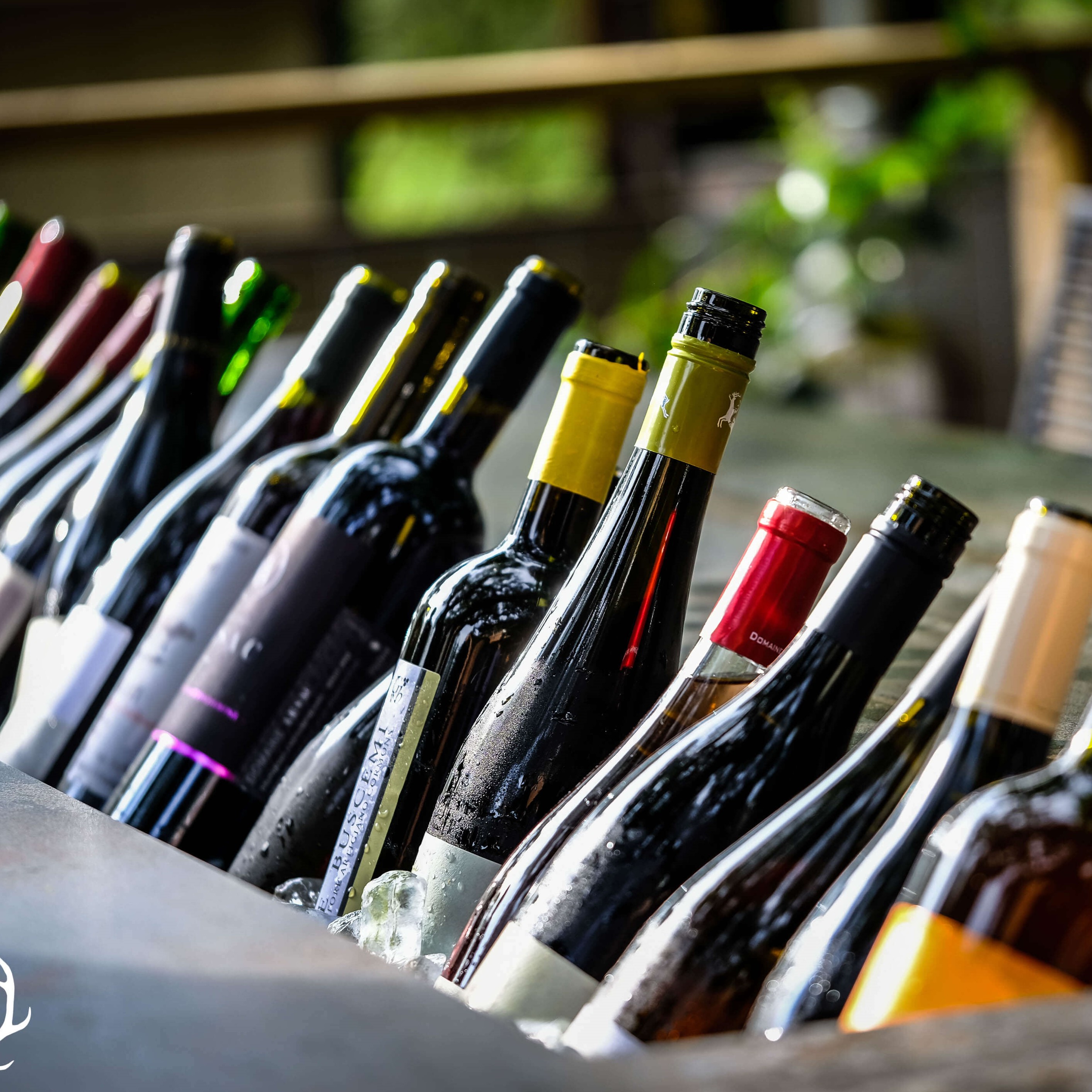
These factors of health and longevity can offset the costs of dry farming in the long run. This is one of the reasons why vineyards planted in California in the 1800’s can still be found producing grapes today. The results of un-tilled, dry-farmed vines planted appropriately and on rootstock matched to the location, can be stronger vines with longer lives, better health, and better resistance to drought. The cover crops actually help water retention, by reducing the soil temperature and increasing holding capacity, and they allow better water penetration down to the vine roots… not to mention the myriad other benefits such as erosion prevention, habitat for beneficial insect, biodiversity, healthy soil microbiology, and fungal networking. But once a vineyard is established and the vines are 3 to 7 years old, depending on their vigor and the site, there generally is no more competition. Cover crops can compete somewhat for water when establishing a new vineyard with young vines. The main way to manage evaporation and water retention is to stop tilling and grow cover crops. But in drier areas this will mean fewer appropriate vineyard sites, and fewer vines per acre – resulting in decreased productivity. In a place like Oregon, with generally abundant winter precipitation, this doesn’t necessarily mean your vineyard will look any differently than an irrigated vineyard. The soil must be of sufficient depth and water-holding capacity, the vines must be planted far enough apart so that they don’t compete with each other for the water in the soil, and you need to manage the vineyard ground between vines to minimize evaporative loss and maximize water retention. In addition to the right rootstock, you need the right land planted in the right way.
#Dry farm wines full
Here’s a full list of common rootstocks, with their qualities, provided by UC Davis. There are great alternatives to riparian rootstock, bred both for pest resistance and drought tolerance. Planting on riparian rootstock in the US West at this point in history is not only silly, it’s irresponsible.
That’s why riparian rootstock can resist the pest.īut to save the vines from phylloxera, we’ve put them on rootstock that does not do well in the dry Mediterranean climates, like California, where we grow most of the wine grapes. That is, they evolved in moist, river bottom soils where phylloxera also evolved. Much of the rootstock on which wine grapevines are growing, due to their resistance to phylloxera, are riparian or riparian crosses. You can’t just stick any old vine in any plot of land and expect to successfully dry farm a vineyard.įirst, you need the right rootstock. There are a few caveats – maybe it’s better to call them requirements – for dry farming. Santa Barbara County gets an average of over 19 inches of rain per year. Yet now we irrigate vineyards in Northern California where they get twice as much rainfall as Los Angeles. The main center of winegrowing in the1800’s wasn’t Northern California, but Southern, all grown without irrigation. Los Angeles was the first great wine region of America.

Places like the island of Santorini, Greece have been dry farming vines for millennia on an average rainfall that is less than that of Los Angeles. And as much as I would be the first to joke that I’d choose wine, the reality of a water shortage for a city like Los Angeles, for example, would be catastrophic.Īnd irrigation isn’t necessary for the most part. At some point we may face a choice of having water or wine to drink, but not both. Water use restrictions will likely eventually make it very costly to irrigate, and at some point there may just not be enough water.

Once this link was established, banks wouldn’t lend to a commercial grape growing operation without this promise of greater yields, and therefore more predictable profits.Īs climate change progresses, the resulting increase in the extremity and frequency of drought in the Western United States has begun to make it clear that reliance on irrigation is what’s crazy. Vineyard growers discovered that you could grow more grapes per acre if you irrigated. The commercial demands of viticulture in California are part of the reason irrigation became the norm. But a bank today is highly unlikely to lend to a winery that wants to plant a vineyard without irrigation. What? There’s no law against dry farming, you say. Today in California, you’d be considered crazy to plant a vineyard without an irrigation system. Before the 1970’s, all vineyards planted on earth were “dry farmed.” Simply, winegrowers had to rely on precipitation as the only source of water for their grape vines.


 0 kommentar(er)
0 kommentar(er)
